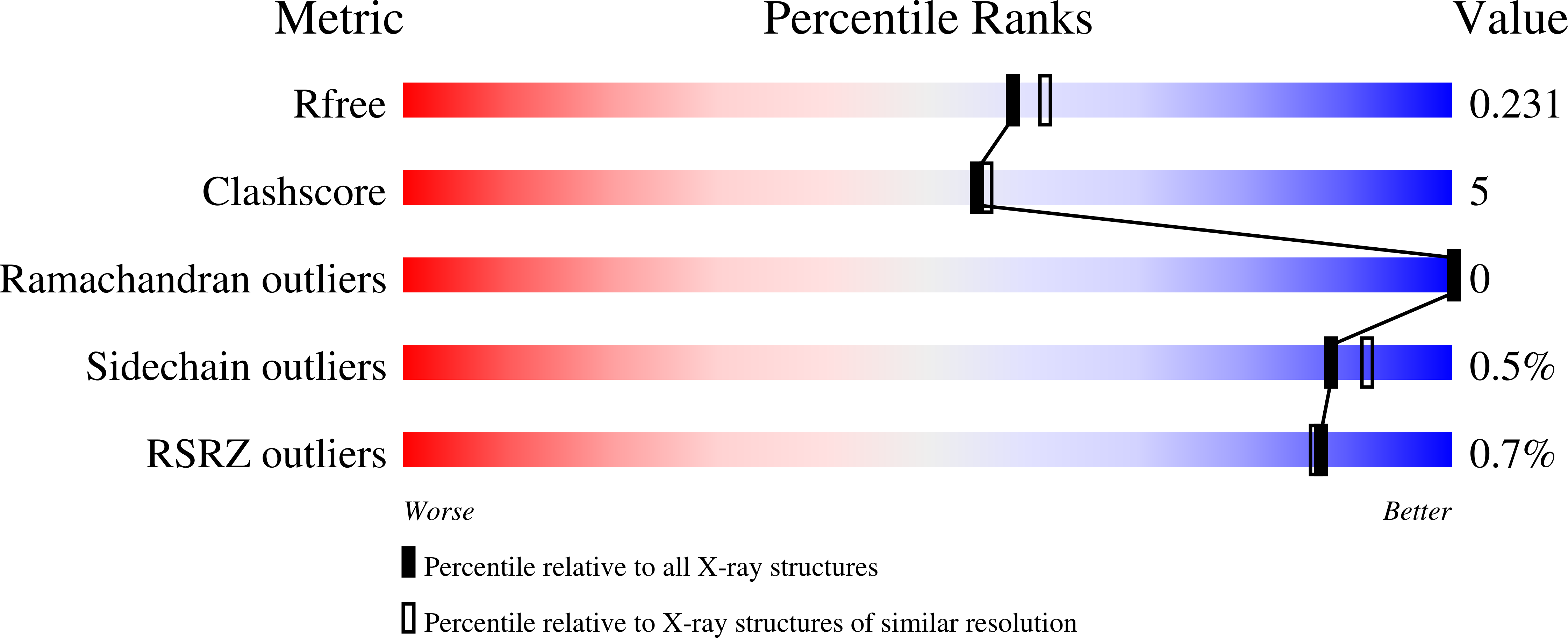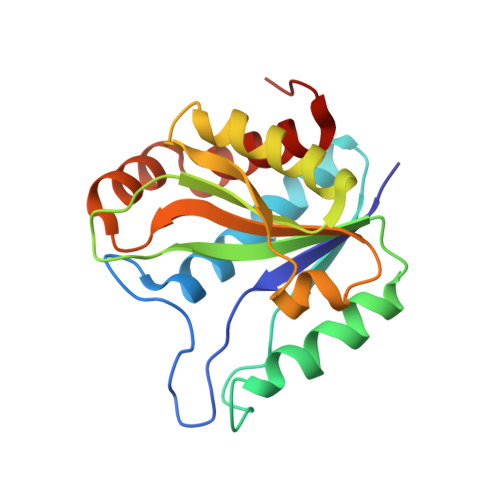Structure-based modification of a Clostridium difficile-targeting endolysin affects activity and host range.
Mayer, M.J., Garefalaki, V., Spoerl, R., Narbad, A., Meijers, R.(2011) J Bacteriol 193: 5477-5486
- PubMed: 21803993
- DOI: https://doi.org/10.1128/JB.00439-11
- Primary Citation of Related Structures:
3QAY - PubMed Abstract:
Endolysin CD27L causes cell lysis of the pathogen Clostridium difficile, a major cause of nosocomial infection. We report a structural and functional analysis of the catalytic activity of CD27L against C. difficile and other bacterial strains. We show that truncation of the endolysin to the N-terminal domain, CD27L1-179, gave an increased lytic activity against cells of C. difficile, while the C-terminal region, CD27L180-270, failed to produce lysis. CD27L1-179 also has increased activity against other bacterial species that are targeted by the full-length protein and in addition was able to lyse some CD27L-insensitive strains. However, CD27L1-179 retained a measure of specificity, failing to lyse a wide range of bacteria. The use of green fluorescent protein (GFP)-labeled proteins demonstrated that both CD27L and CD27L1-179 bound to C. difficile cell walls. The crystal structure of CD27L1-179 confirms that the enzyme is a zinc-dependent N-acetylmuramoyl-l-alanine amidase. A structure-based sequence analysis allowed us to identify four catalytic residues, a proton relay cascade, and a substrate binding pocket. A BLAST search shows that the closest-related amidases almost exclusively target Clostridia. This implied that the catalytic domain alone contained features that target a specific bacterial species. To test this hypothesis, we modified Leu 98 to a Trp residue which is found in an endolysin from a bacteriophage of Listeria monocytogenes (PlyPSA). This mutation in CD27L resulted in an increased activity against selected serotypes of L. monocytogenes, demonstrating the potential to tune the species specificity of the catalytic domain of an endolysin.
Organizational Affiliation:
Institute of Food Research, Colney, Norwich NR4 7UA, United Kingdom. Melinda.Mayer@BBSRC.ac.uk
















